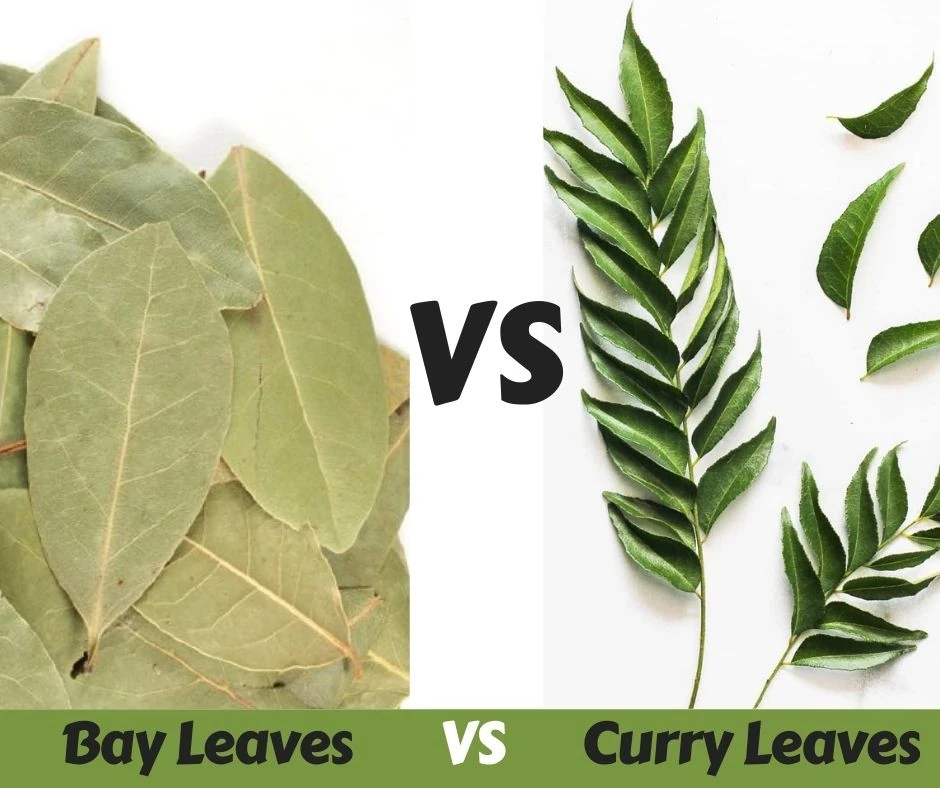
Curry leaves and bay leaves are both integral to various culinary traditions, adding unique flavors and aromas to dishes. However, they are distinct in their origins, uses, and characteristics. This article delves into the key differences between these two aromatic leaves.
Origin and Appearance
Curry Leaves:
- Botanical Name: Murraya koenigii
- Origin: Native to the Indian subcontinent, curry leaves are widely used in South Indian, Sri Lankan, and Southeast Asian cuisines.
- Appearance: Curry leaves are small, glossy, and dark green with a distinctively aromatic scent. They grow in pairs along a stem, forming a pinnate structure.
Bay Leaves:
- Botanical Name: Laurus nobilis (commonly used in cooking)
- Origin: Bay leaves are native to the Mediterranean region and are a staple in European, Middle Eastern, and American cuisines.
- Appearance: Bay leaves are larger, elliptical, and have a leathery texture. They are typically a dull green or olive color and can be used either fresh or dried.
Flavor Profile
Curry Leaves:
- Curry leaves have a unique, pungent flavor with hints of citrus and a slightly bitter undertone. Their aroma is robust and reminiscent of anise and lemongrass. When fried or tempered, they release a nutty, aromatic flavor that enhances the taste of the dish.
Bay Leaves:
- Bay leaves have a milder, more subtle flavor compared to curry leaves. They impart a slightly floral, herbal, and somewhat bittersweet taste to dishes. The aroma of bay leaves is warm and slightly peppery, adding depth to soups, stews, and sauces.
Culinary Uses
Curry Leaves:
- Indian Cuisine: Curry leaves are a staple in South Indian cooking. They are often tempered in hot oil with mustard seeds, cumin seeds, and other spices to create a flavorful base for curries, dals, and rice dishes.
- Southeast Asian Cuisine: Used in Thai and Malaysian dishes, curry leaves enhance the flavor of various stir-fries and soups.
- Versatility: Curry leaves can be used fresh or dried, though fresh leaves are preferred for their superior flavor and aroma.
Bay Leaves:
- European Cuisine: Bay leaves are a key ingredient in French and Italian cooking, often used to flavor stocks, soups, stews, and braises.
- Middle Eastern and American Cuisine: In Middle Eastern dishes, bay leaves are used to season rice and meat dishes. In American cooking, they are commonly used in gumbo, chowders, and marinades.
- Versatility: Bay leaves are typically used dried and are added whole to dishes during cooking, then removed before serving.
Nutritional and Medicinal Benefits
Curry Leaves:
- Curry leaves are rich in vitamins A, B, C, and E. They are also known for their antioxidant properties and are believed to aid in digestion, lower cholesterol, and improve hair and skin health.
Bay Leaves:
- Bay leaves contain vitamins A and C, iron, calcium, and magnesium. They have been traditionally used to relieve digestive issues, reduce inflammation, and provide antioxidant benefits.
Conclusion
While curry leaves and bay leaves both add distinct flavors and aromas to various dishes, they are not interchangeable due to their different taste profiles and culinary uses. Understanding these differences can help in choosing the right leaf to enhance your culinary creations. Curry leaves bring a unique, robust flavor ideal for South Asian and Southeast Asian cuisines, while bay leaves offer a subtle, herbal note perfect for European and American dishes.



